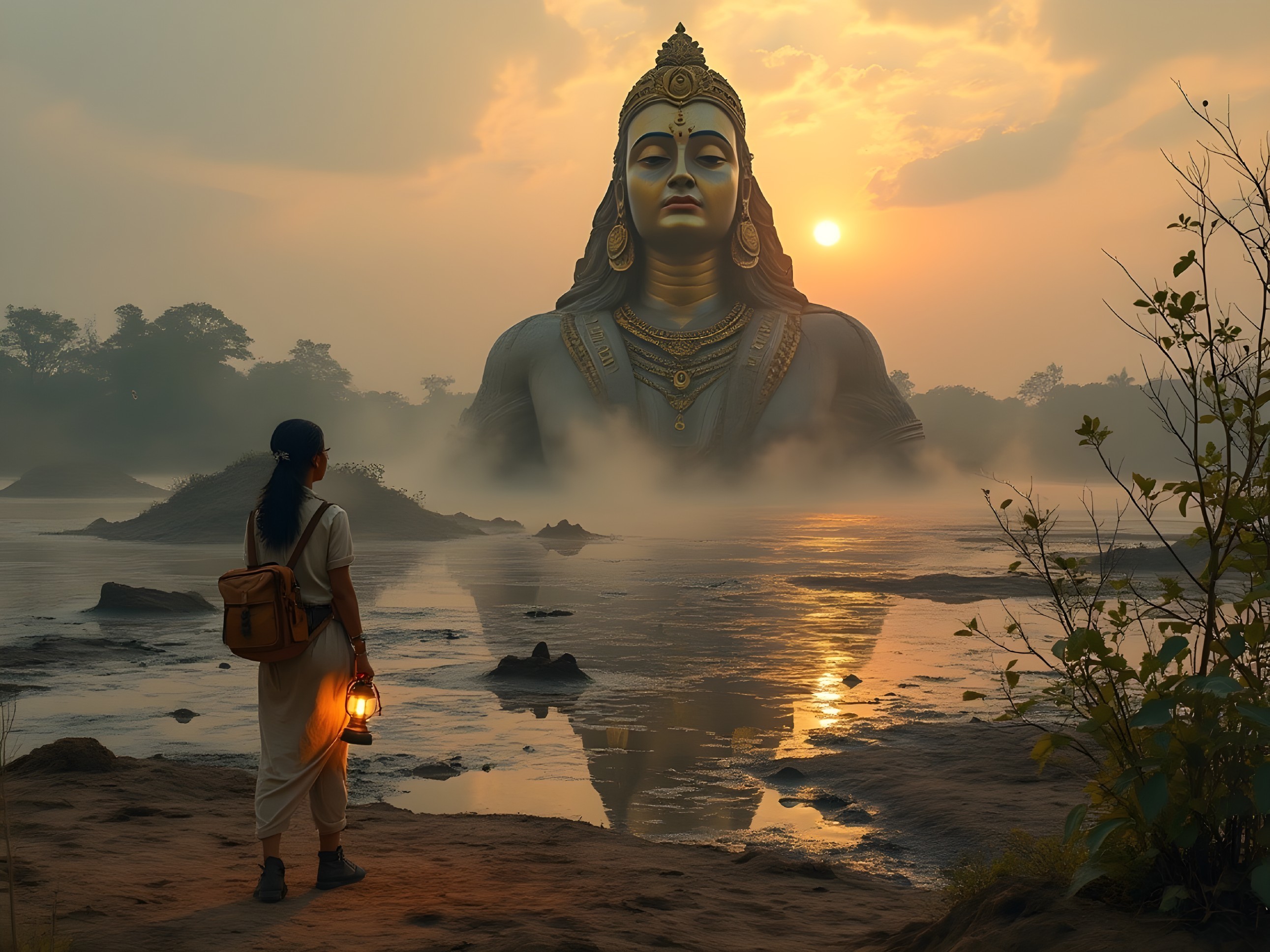Comments
Loading Dream Comments...
You must be logged in to write a comment - Log In

 Artist
Artist
The Sunken Statue of Vimana Nagar
It was the third day of the dry season when the waterline of Madurai Lake finally fell.
Dr. Anjali Rao stood at the edge of the marshy shore, her gaze fixed on the steaming veil that floated above the surface like a breathing creature. Her shoes sank into the soft mud with every step, but she felt no resistance—only anticipation. In her hands, she held an oiled-covered notebook, the edges of which bore the mark of a life lived.
"If it's here," she murmured, "it's today."
Madurai Lake had been a still body of water for centuries. Locals spoke of a curse at its bottom. Fishermen avoided the center, and children were warned: If you go too close, the god will look at you. Yet it was that very gaze that had brought Dr. Rao to southern India.
An ancient text, written on palm leaves, which she had found in a monastery near Tiruvannamalai, spoke of a sunken city: Vimana Nagar. A city of golden domes, whose center was said to have been a Vishnu temple as high as a seven-story tower. The text ended with a sentence:
"And when the water holds its breath, the god raises his head."
She knew she hadn't just made a discovery. She had reclaimed a city that had been forgotten by the world—but had never forgotten itself.
On the third day, she left Bhuvana Giri. Not out of fear, not out of duty. But out of respect. She left the temple as she had found it—hidden, silent, alive. A part of the forest, a part of the earth, a part of history not recorded in books.
But she knew: The place would never completely disappear again. Not from the world. And certainly not from her.